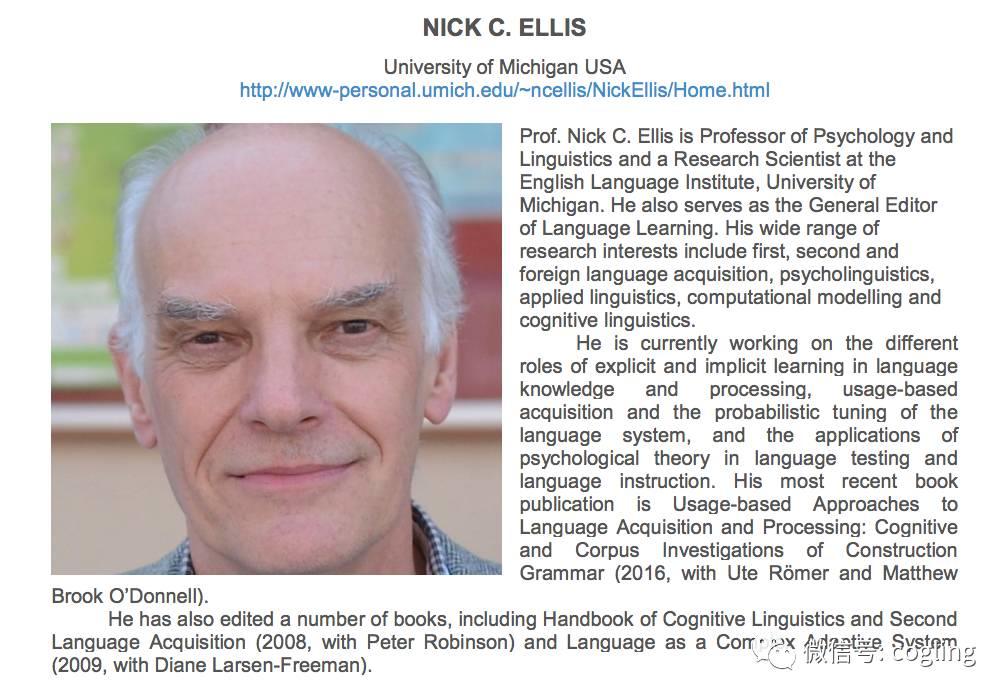USAGE-BASED APPROACHES TO LANGUAGE, LANGUAGE ACQUISITION, AND LANGUAGE PROCESSING
Nick C. Ellis
University of Michigan
Usage-based approaches hold that we learn language through our experience of language. Corpus Linguistics provides relevant evidence of the latent structure of usage. Cognitive Linguistics and Psycholinguistics are concerned with how people acquire, represent, and process this knowledge. 1) Usage. The usage of English verb-argument constructions (VACs) is investigated in large corpora in terms of grammatical form, semantics, lexical constituency, and distribution patterns. VAC type-token frequency follows Zipfian scale-free patterns, as does the degree distribution of the corresponding semantic networks. This suggests that language form, language meaning, and language usage might come together across scales to promote robust induction by means of statistical learning over limited samples. 2) Usage in Learning: Child language acquisition. Analysis of the distribution of VACs in English child-directed speech (CDS) and child language in CHILDES corpora is also shown to be Zipfian, and measures of VAC-verb contingency showed VACs to be selective in their constituency. Language acquisition follows the leads of CDS usage. 3) Usage in Mind: L1 knowledge. VAC processing is sensitive to statistical patterns of usage. Native speakers free-associated to sparse VAC frames such as ‘he __ across the….’. Multiple regression analyses predicting the frequencies of types generated show independent contributions of (i) verb frequency in the VAC, (ii) VAC-verb contingency, and (iii) verb centrality within the VAC semantic network. Online processing experiments (recognition threshold, naming latency, lexical decision, and meaning judgment) likewise demonstrate effects of these factors. VAC processing involves rich associations, tuned by verb type and token frequencies and their contingencies of usage, which interface syntax, lexis, and semantics. 4) Usage in Mind: L2 knowledge. L2 advanced learners of English show the same effects, although analyses of their frequencies of production residualized against the English native speaker responses demonstrated additional influence of L1 transfer. L2 knowledge thus demonstrates effects of L2 and L1 usage.
